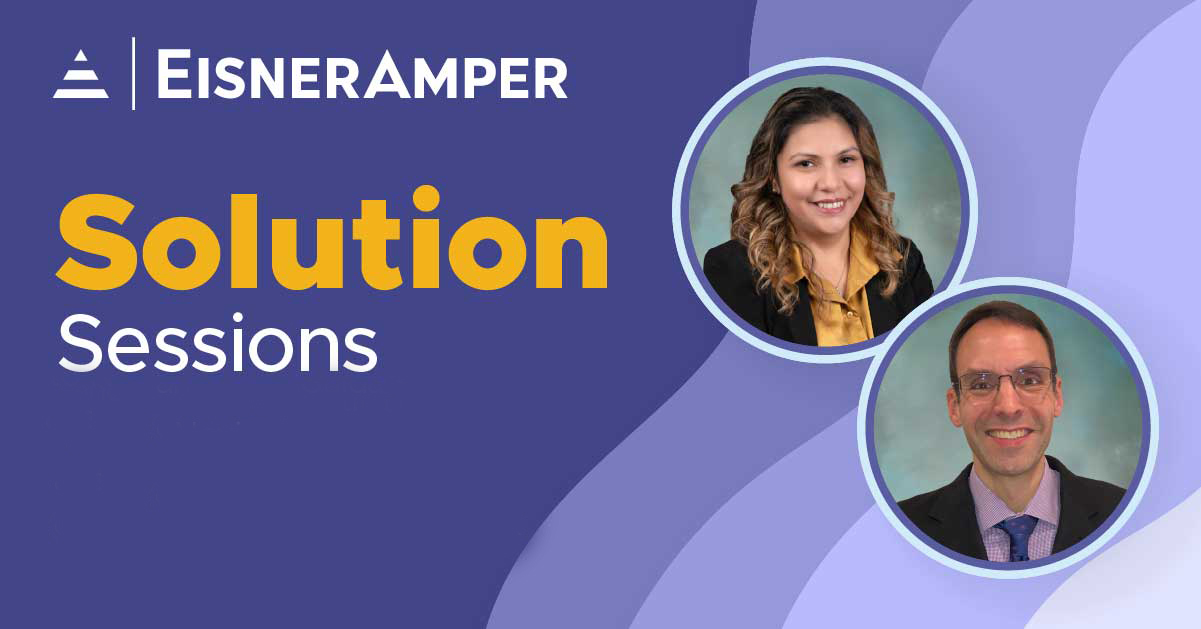
Determining Your HR Team’s Short- and Long-Term Effectiveness
- Published
- Oct 6, 2022
- Topics
- Share
It doesn’t matter the industry, structure or size of your organization. Business leaders continue to face new challenges with recruiting, retaining and motivating employees as our work environments rapidly evolve. Due to these changes, having an effective and scalable team of human resource (“HR”) professionals is more important than ever when designing a successful strategic plan.
In an era when HR professionals are tasked with increasing responsibility in everything from benefit and compensation administration to employee engagement and culture building, resources are becoming stretched thin. A valuable tool many organizations are leveraging to ensure their teams have the right resources and are operating effectively are routine and thorough HR assessments.
Here, I’ll cover what exactly an HR assessment entails, how business leaders are taking advantage of them to scale their operations and our unique process, which is based on deep-rooted business psychology.
What Is an HR Assessment?
An HR assessment is a form of strategic HR consulting, that sheds valuable light onto existing issues and opportunity areas, like how an auditor looks to identify gaps within a business’s finances.
A typical HR assessment with an outside party starts by conducting qualitative research through one-on-one interviews, focus groups and an analysis of archival data to gain a better understanding of the organization. By connecting with employees, department leaders, the C-suite and company board members, an effective HR assessment provides insight across all areas of the business.
If your organization has never assessed your HR department in the past, the best time is now. If you have recently, I recommend conducting one every three to five years as part of your organization’s strategic planning timeline. Additionally, if you’re involved with any mergers or acquisitions, gaining insights through an HR assessment, roughly 100 days before the deal, can provide valuable insights to help everything go more smoothly.
How Does an HR Assessment Help My Team Improve?
To say HR has a broad-reaching impact within an effectively operating organization would be an understatement. An effective assessment partner will take a deep dive into the HR practices and delivery across various lenses within your organization. By surveying and conducting research in these groups and sub-subgroups, and then providing qualitative results, leaders can improve by benchmarking and applying actionable recommendations in each.
1. Business Specific Information
- General Company Information
- Succession Planning
- Strategic Planning
- SWOT Analysis
2. HR Effectiveness
- Recruitment and Selection
- Orientation and Onboarding
- Training and Development
- Leadership Development
- Performance Management
- Employee Engagement, Morale and Relations
3. Compensation and Benefits
- Labor Relations
- Compensation
- Benefits
4. HR Administration
- HR Compliance
- Workforce Analytics
- HR Department’s Team Skills, Knowledge and Ability
- Overall Effectiveness of HR
5. Additional Takeaway Areas
- What Departments Should Keep Doing, Start Doing and Stop Doing
- Critical Areas to Address
Using Interpretative Phenomenological Analysis to Produce Actionable Takeaways
In order to gain an understanding of the past, present and future through an HR assessment, it’s important to both collect and analyze data based on people and psychology. By using a framework known as Interpretative Phenomenological Analysis (“IPA”), we can gather information in a systematic way, providing a better understanding of the truth from multiple perspectives and viewpoints. The output on an IPA includes a detailed list of claims, concerns and recommendations from all those involved in the study, allowing leaders to identify reoccurring themes across their organizations.
During an effective IPA in an HR assessment, there are six key data collection and analyzation steps professionals will take to produce actionable recommendations based on truth.
- After the HR consultant conducts their initial interview, they’ll immerse themselves in the original data by rereading the transcript in full—confirming for accuracy against audio or video—ensuring the following steps remain accurate to the findings.
- The HR consultant then lays out all of their notes and takeaways, using an objective outlook on everything covered; this is the most time-consuming part of the process.
- Once all notes, statements and takeaways are accurately assembled, the HR consultant will begin identifying key themes and trends from their interview.
- The HR consultant then looks for connections between all of their identified HR and organizational trends, shedding light on further, larger issues.
- Moving on to the next interview, the research repeats steps 1-4, looking for both new and common themes and trends.
- Finally, the HR consultant analyzes the aggregate of all interviews and findings, determining both common themes and sub-themes, which are then turned into actionable recommendations based on initial goals.
Where Should I Get Started?
Having an effective HR department, which has the right resources to operate, is no longer an afterthought in a labor market continually challenged with recruiting and retaining talented employees.
Whether it’s a top-down rework of how your team views HR operations, or you’re trying to find new ways to showcase your commitment to both current and prospective employees, start by first establishing your goals and then finding the correct partner with whom to achieve them.
When the time comes for your organization to reassess and refine your HR department’s effectiveness at delivering its services, consider multiple options and what’s best for reaching your strategic goals.
Contact EisnerAmper
If you have any questions, we'd like to hear from you.
Receive the latest business insights, analysis, and perspectives from EisnerAmper professionals.











